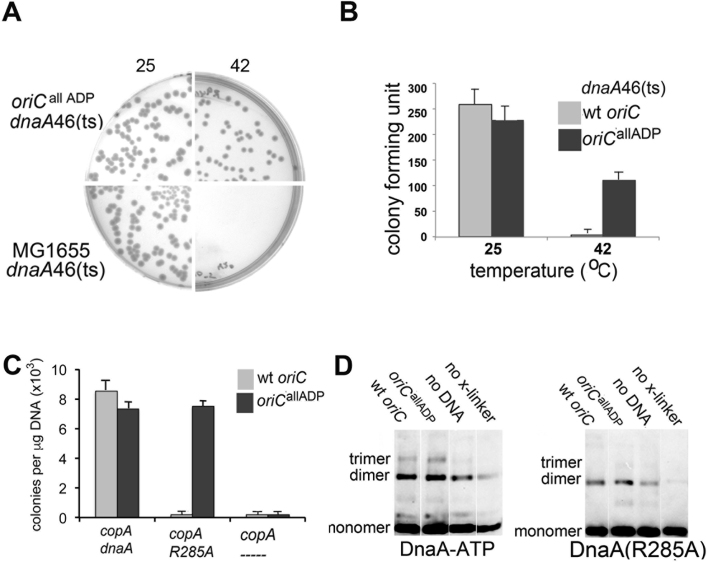Figure 4.
Initiation from oriCallADP has a reduced requirement for DnaA-ATP in vivo. (A) Cells from a single colony of MG1655(dnaA46 ts)(bottom) or MG1655(oriCallADP, dnaA46 ts) (top) were diluted, plated and incubated at either 25°C (left) or 42°C (right). Colonies were counted after 24 or 18 h, respectively. Representative plates are shown. (B) Quantitation of the plating study shown in (A). Colony counts from two separate experiments, with triplicate plates for each temperature in each experiment were run. Error bars are SD of mean. (C) DnaA null cells, carrying both a plasmid R1 origin and either oriC (gray bars) or oriCallADP (black bars), were transformed with a plasmid expressing the plasmid R1 origin inhibitor copA or a plasmid co-expressing either wild-type DnaA or DnaA(R285A) and copA. Transformation efficiency was calculated after 18 h of growth. Two separate experiments, with triplicate plates were run. Error bars are SD of mean. (D) Oligomeric DnaA forms after DTSSP treatment of purified supercoiled plasmids incubated with 0 or 100 nM DnaA-ATP or DnaA(R285)-ATP. Three separate experiments were performed. Quantitation is shown in Supplementary Figure S3.

